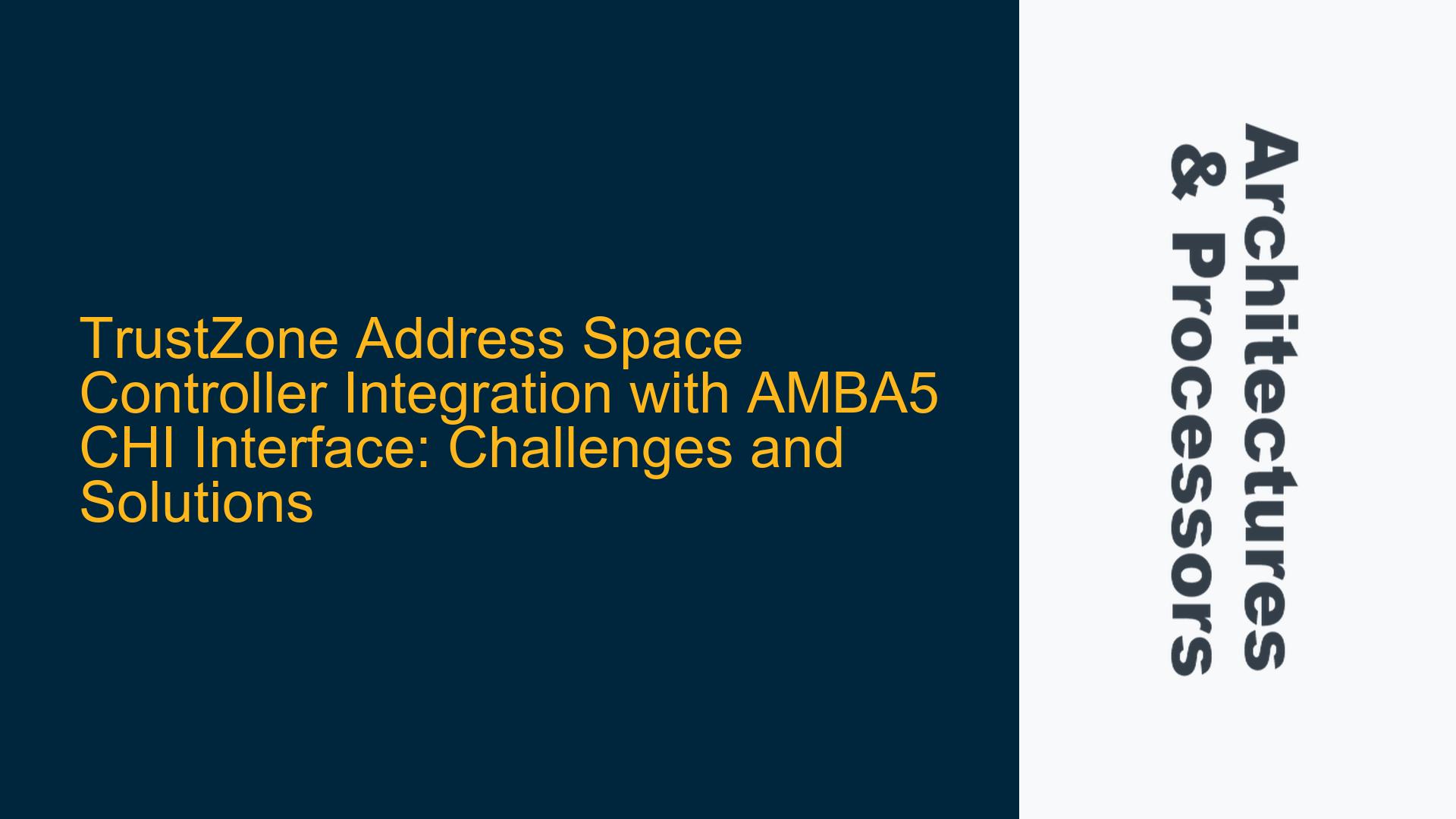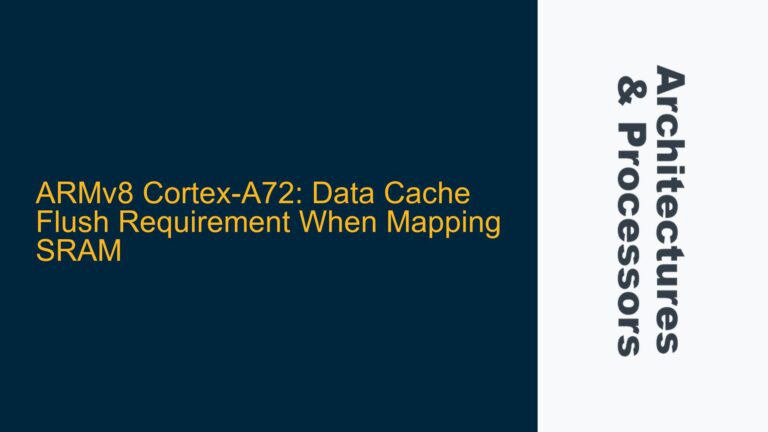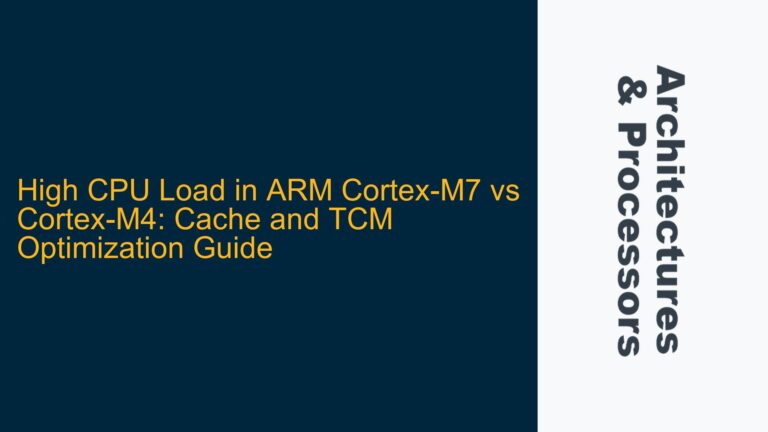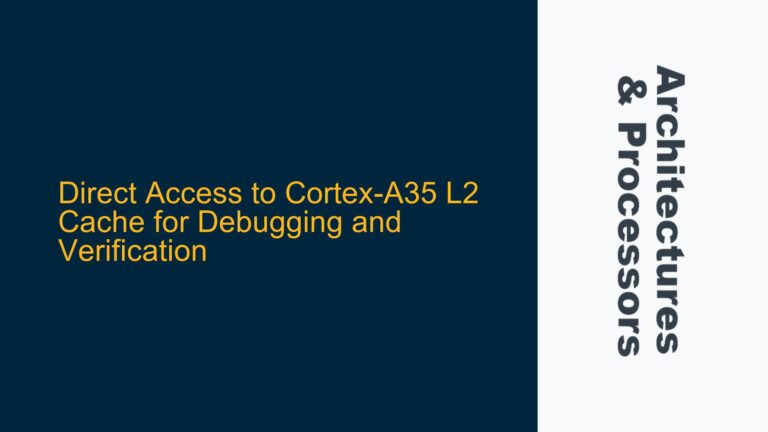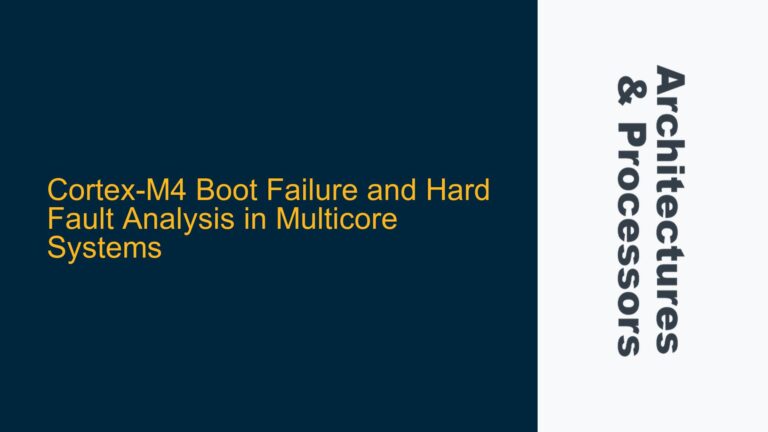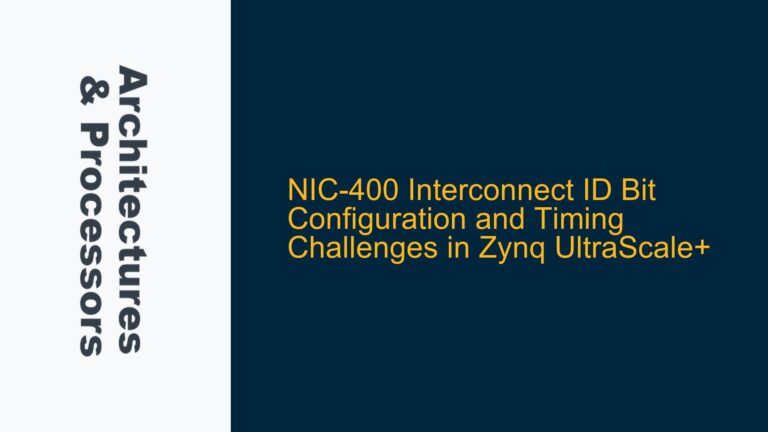TrustZone Address Space Controller (TZC) and AMBA5 CHI Interface Compatibility
The integration of ARM’s TrustZone Address Space Controller (TZC) with the AMBA5 CHI (Coherent Hub Interface) presents a unique set of challenges, particularly when dealing with secure and non-secure transactions in a system-on-chip (SoC) design. The TZC-400, a well-known TrustZone Address Space Controller designed for the ACE-Lite interface, provides a robust mechanism for partitioning memory into secure and non-secure regions. However, the AMBA5 CHI interface, which is designed for high-performance coherent systems, introduces complexities that are not directly addressed by the TZC-400. This discrepancy raises questions about how TrustZone functionality can be effectively implemented in systems utilizing the CHI interface.
The AMBA5 CHI specification mentions TrustZone support on a transaction-by-transaction basis, but it does not provide detailed guidance on how this support is implemented or how it interacts with existing TrustZone IP like the TZC-400. This lack of clarity can lead to confusion when designing systems that require both high-performance coherence and robust security features. The absence of a direct equivalent to the TZC-400 for the CHI interface further complicates matters, as designers must find alternative methods to enforce memory partitioning and secure transaction handling.
Missing TrustZone IP for CHI and Implications for TEE Implementations
One of the primary issues in integrating TrustZone with the AMBA5 CHI interface is the lack of a dedicated TrustZone Address Space Controller for CHI. The TZC-400, which is designed for ACE-Lite, cannot be directly used with CHI due to differences in the protocol and transaction handling mechanisms. This gap in the IP portfolio necessitates a custom solution or a workaround to achieve similar functionality in CHI-based systems.
The TrustZone architecture relies heavily on the ability to partition memory and enforce access controls based on the security state of the system. In ACE-Lite systems, the TZC-400 provides this functionality by intercepting transactions and checking their security attributes against a set of programmable region descriptors. However, the CHI interface, being a more complex and high-performance protocol, does not have a direct equivalent to the TZC-400. This means that designers must either implement a custom TrustZone controller for CHI or rely on other mechanisms within the CHI protocol to enforce security policies.
The implications of this missing IP are significant, especially when considering the implementation of Trusted Execution Environments (TEEs). TEEs rely on the ability to securely partition memory and enforce access controls to protect sensitive data and code from unauthorized access. Without a dedicated TrustZone controller for CHI, achieving the same level of security in CHI-based systems becomes more challenging. Designers must carefully consider how to implement memory partitioning and access controls in a way that is compatible with the CHI protocol while still meeting the security requirements of a TEE.
Implementing TrustZone Functionality in CHI-Based Systems: Best Practices and Solutions
To address the challenges of integrating TrustZone functionality with the AMBA5 CHI interface, designers must adopt a combination of best practices and custom solutions. The following steps outline a comprehensive approach to implementing TrustZone in CHI-based systems:
Understanding CHI Transaction Attributes and Security States
The first step in implementing TrustZone functionality in a CHI-based system is to understand how security states are represented in CHI transactions. The CHI protocol includes transaction attributes that can be used to indicate the security state of a transaction. These attributes can be leveraged to enforce memory partitioning and access controls in a manner similar to the TZC-400 in ACE-Lite systems.
Designers must carefully map the security states defined by TrustZone to the transaction attributes available in the CHI protocol. This mapping will form the basis for implementing memory partitioning and access controls in the system. It is important to note that the CHI protocol may not provide the same level of granularity as the TZC-400, so designers may need to implement additional logic to achieve the desired level of security.
Custom TrustZone Controller for CHI
Given the lack of a dedicated TrustZone controller for CHI, designers may need to implement a custom TrustZone controller that is tailored to the CHI protocol. This custom controller would be responsible for intercepting CHI transactions, checking their security attributes, and enforcing memory partitioning and access controls based on the system’s security policies.
The custom TrustZone controller should be designed to integrate seamlessly with the CHI protocol, ensuring that it does not introduce unnecessary latency or complexity into the system. This may require a deep understanding of the CHI protocol and its transaction handling mechanisms, as well as the ability to implement custom logic that can efficiently enforce security policies without compromising system performance.
Leveraging CHI Protocol Features for Security Enforcement
In addition to implementing a custom TrustZone controller, designers should also explore other features of the CHI protocol that can be used to enforce security policies. For example, the CHI protocol includes mechanisms for handling cache coherency and memory ordering, which can be leveraged to ensure that secure and non-secure transactions are properly isolated.
Designers should also consider how to use the CHI protocol’s support for multiple security states to implement more complex security policies. For example, the CHI protocol may allow for the definition of multiple secure states, each with its own set of access controls and memory partitioning rules. This can be used to implement a more fine-grained security model that is better suited to the requirements of a TEE.
Testing and Validation of TrustZone Implementation in CHI-Based Systems
Once the TrustZone functionality has been implemented in a CHI-based system, it is crucial to thoroughly test and validate the implementation to ensure that it meets the system’s security requirements. This includes testing the custom TrustZone controller, as well as the overall system’s ability to enforce memory partitioning and access controls.
Testing should include both functional and performance testing to ensure that the TrustZone implementation does not introduce any unintended side effects or performance bottlenecks. Functional testing should focus on verifying that the system correctly enforces security policies, while performance testing should ensure that the TrustZone implementation does not negatively impact system performance.
Conclusion: Achieving Secure and High-Performance CHI-Based Systems with TrustZone
Integrating TrustZone functionality with the AMBA5 CHI interface presents a unique set of challenges, but with careful planning and implementation, it is possible to achieve a secure and high-performance system. By understanding the CHI protocol’s transaction attributes and security states, implementing a custom TrustZone controller, leveraging CHI protocol features for security enforcement, and thoroughly testing the implementation, designers can successfully integrate TrustZone into CHI-based systems.
While the lack of a dedicated TrustZone controller for CHI may initially seem like a significant hurdle, it also provides an opportunity for designers to create custom solutions that are tailored to the specific requirements of their systems. By adopting a comprehensive approach to implementing TrustZone in CHI-based systems, designers can ensure that their systems meet the highest standards of security and performance.
Table: Comparison of TrustZone Implementation in ACE-Lite and CHI Interfaces
| Feature | ACE-Lite with TZC-400 | CHI with Custom TrustZone Controller |
|---|---|---|
| Memory Partitioning | Supported via TZC-400 region descriptors | Custom logic required |
| Security State Representation | Directly supported in ACE-Lite | Mapped to CHI transaction attributes |
| Access Control Enforcement | Enforced by TZC-400 | Enforced by custom TrustZone controller |
| Cache Coherency Handling | Managed by ACE-Lite protocol | Leveraged from CHI protocol features |
| Performance Impact | Minimal with TZC-400 | Dependent on custom implementation |
| Testing and Validation | Standardized with TZC-400 | Requires custom testing and validation |
This table highlights the key differences and considerations when implementing TrustZone in ACE-Lite versus CHI-based systems. While the TZC-400 provides a standardized and efficient solution for ACE-Lite, CHI-based systems require a more customized approach to achieve similar functionality.
